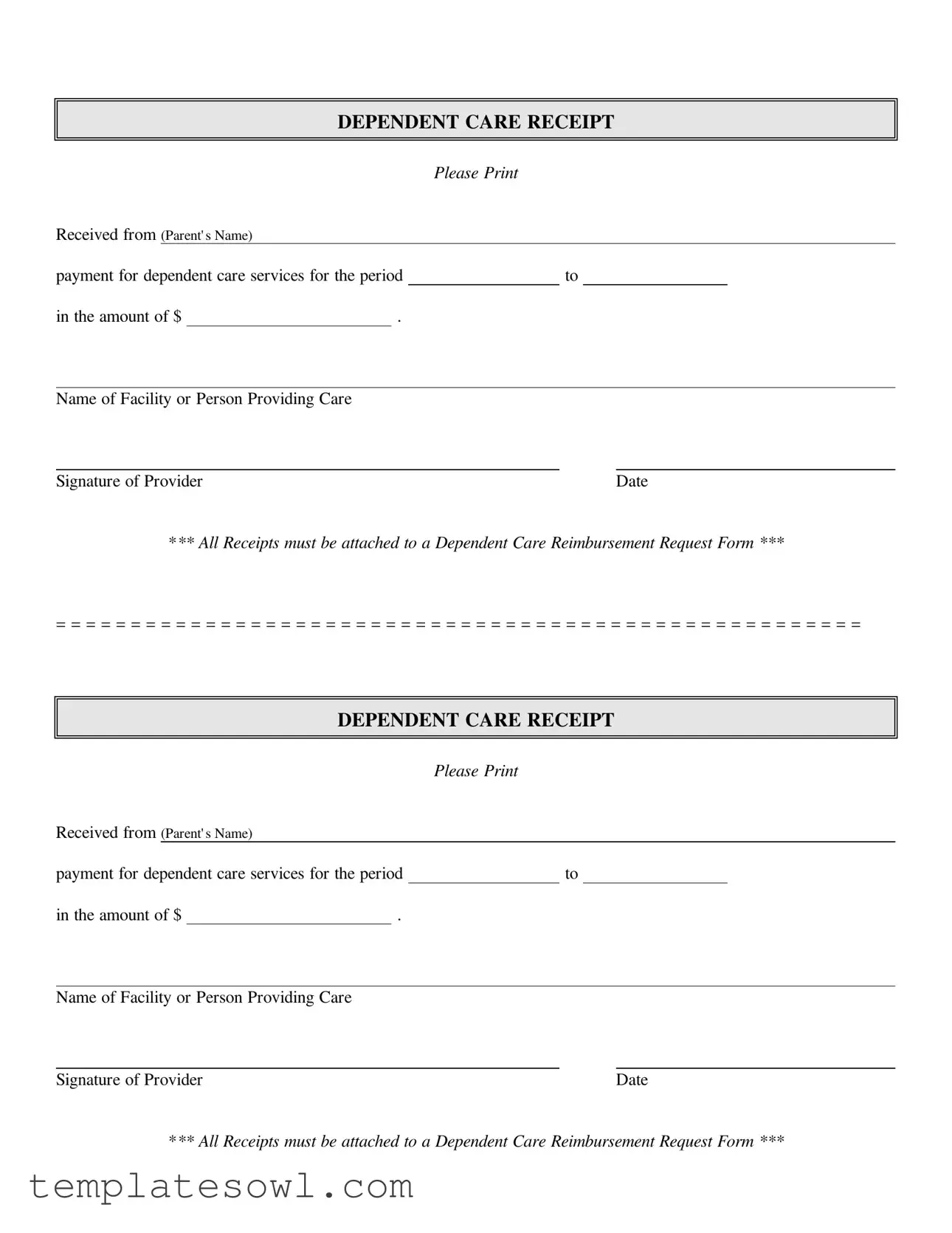Filling out the Dependent Care Receipt form can seem straightforward, but many people unknowingly make mistakes that can jeopardize their reimbursement claims. One common mistake is failing to include the correct parent’s name. If the name does not match the one on the reimbursement request or the associated account, it can lead to delays or denials.
Another frequent error arises from leaving the payment amount blank. This amount is crucial as it directly influences how much reimbursement the parent will receive. A receipt with no amount will almost certainly raise red flags with the reviewing authority.
Many individuals also overlook the specific care period on the form. Not detailing the exact dates for which care was provided can lead to confusion or questions during the reimbursement process. Accurate dates help ensure all services are accounted for and appropriate funds are allocated.
It's also essential to ensure that the signature of the provider is present. Many people assume the form speaks for itself, but without a provider’s signature, the receipt could be deemed invalid. This is a small but vital part of the documentation that shouldn’t be ignored.
Additionally, forgetting to attach the Dependent Care Reimbursement Request Form is another common error. All receipts must be submitted alongside the request. Failing to complete this step can result in the loss of the entire reimbursement request, forcing parents to start the process over.
Some recipients confuse personal care providers with official facilities. It's important to indicate whether the care was provided by a licensed facility or a personal caregiver, as different requirements may apply depending on the provider type. Mislabeling this can complicate claims.
People often make the mistake of not keeping copies of submitted documents. The importance of retaining copies cannot be overstated. Should there be any issues with claims processing, having a record of what was submitted can help resolve matters quickly.
Another common oversight is the date on the receipt. Some parents fill out the form too early or too late after care has been provided, which can cause discrepancies. Always ensure that the date accurately reflects when the service occurred.
In addition, some people include expenses that are not eligible for reimbursement. It’s vital to understand which services qualify under dependent care guidelines. Make sure to consult the requirements beforehand to avoid submitting ineligible expenses.
Finally, failing to double-check for manual errors is a significant mistake. Simple typos or incorrect information can lead to processing delays. Taking the time to review everything will help ensure that your submission is accurate and complete.

